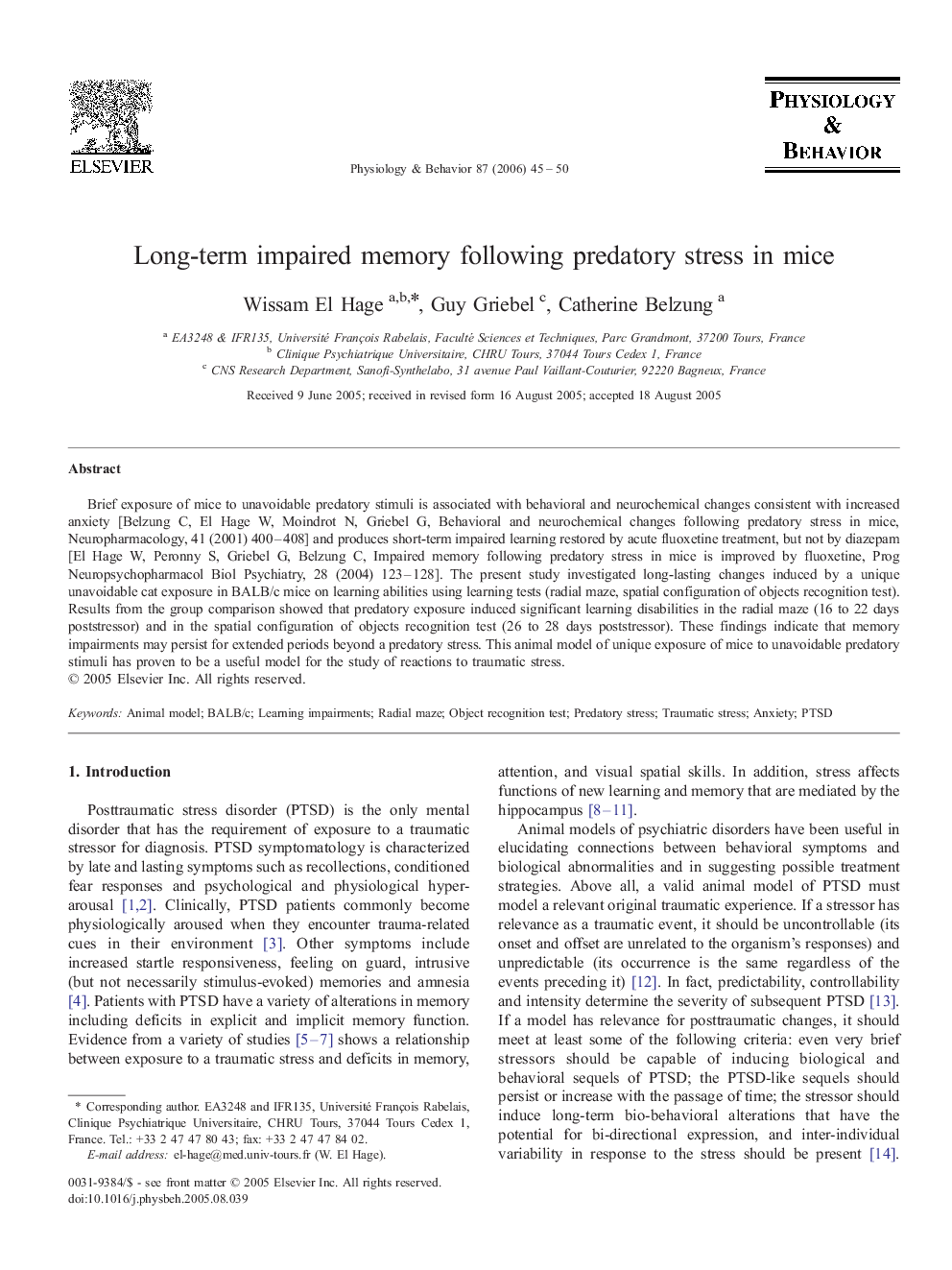| Article ID | Journal | Published Year | Pages | File Type |
|---|---|---|---|---|
| 2846478 | Physiology & Behavior | 2006 | 6 Pages |
Brief exposure of mice to unavoidable predatory stimuli is associated with behavioral and neurochemical changes consistent with increased anxiety [Belzung C, El Hage W, Moindrot N, Griebel G, Behavioral and neurochemical changes following predatory stress in mice, Neuropharmacology, 41 (2001) 400–408] and produces short-term impaired learning restored by acute fluoxetine treatment, but not by diazepam [El Hage W, Peronny S, Griebel G, Belzung C, Impaired memory following predatory stress in mice is improved by fluoxetine, Prog Neuropsychopharmacol Biol Psychiatry, 28 (2004) 123–128]. The present study investigated long-lasting changes induced by a unique unavoidable cat exposure in BALB/c mice on learning abilities using learning tests (radial maze, spatial configuration of objects recognition test). Results from the group comparison showed that predatory exposure induced significant learning disabilities in the radial maze (16 to 22 days poststressor) and in the spatial configuration of objects recognition test (26 to 28 days poststressor). These findings indicate that memory impairments may persist for extended periods beyond a predatory stress. This animal model of unique exposure of mice to unavoidable predatory stimuli has proven to be a useful model for the study of reactions to traumatic stress.
